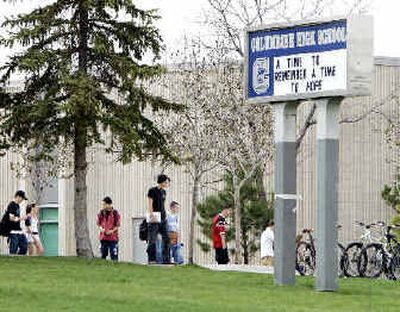Closure on Columbine takes time

DENVER – Joe Higgins remembers walking back into Columbine High School, weeks after two teenage gunmen slaughtered 12 classmates and a teacher before killing themselves.
His math lessons were still on the chalkboard. His calendar was on the same page, April 20, and his students’ calculators and books were still on the desks, left behind during what they thought was a fire drill.
“It was like time had frozen,” Higgins said.
The memories of that day remain crystal clear for Higgins and dozens of other teachers who survived the nation’s deadliest school shooting six years ago today. Many have moved on, and one is writing a book about it. Others, including Higgins, have had trouble putting the attack behind them.
Higgins says he was once unemotional and strict. Last year, he wept upon hearing a student he had never met died of cancer. Fire alarms make him jumpy to this day.
“I would like to be unemotional again, but I don’t have control over that anymore,” says Higgins, who teaches part-time at another Denver-area high school. “I don’t have total control over my emotions anymore.”
For years, the anniversary of Columbine has brought media attention to relatives of the slain, student survivors and authorities, still blamed by some for failing to notice problems with Dylan Klebold and Eric Harris before their killing spree.
Teachers, meanwhile, have fiercely protected each other as they sought healing in private, while school officials have refused to release details of their investigation.
Scores of teachers stayed at Columbine until that year’s freshman class graduated. Roughly 30 teachers who were at the school on April 20, 1999, still work there.
Paula Reed returned part-time to Columbine this spring after a two-year leave during which she became a novelist. Every story she wrote had a happy ending.
She stayed at Columbine until students who remembered the shootings firsthand graduated, though the pain of coming to work was making it harder to walk in the door.
“There was such a sense as a teacher, you could not abandon those kids,” Reed says. “I didn’t want to go back in a lot of ways, but to actually not go back was unthinkable.”
She finally left to get away from the constant media attention and what she describes as the ripping of a scab that came with other deaths within the Columbine community, including suicides and two students killed at a nearby sandwich shop in 2000.
After a shooting last month at a high school on a Minnesota Indian reservation, officials blocked outsiders. But Columbine became virtually a tour-bus attraction, with tourists leaning out windows to take pictures.